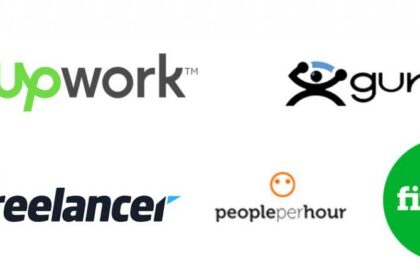In an ever-evolving landscape of work, the traditional confines of nine-to-five jobs are reshaping, giving rise to a multitude of freelancing paths. Whether you’re contemplating diving into the world of full-time freelancing or weighing the benefits of part-time pursuits, the balancing act between stability and flexibility poses unique challenges and opportunities. “Balancing Acts: Full-Time vs Part-Time Freelancing Insights” invites you to navigate this duality, exploring the nuances of both commitments. Through this exploration, we aim to equip you with the insights needed to make an informed decision, one that aligns with your personal aspirations and professional goals. Join us as we delve into the intricacies of freelancing, examining how time, financial stability, and creative freedom intersect in this dynamic and adaptable work environment.
Freelance Writing
offers a unique blend of freedom and responsibility, making it an attractive option for many. Whether you choose to dive in full-time or tackle projects part-time, each path presents its own set of challenges and rewards. Here are some advantages of each approach:
- Full-Time Freelancing: Greater income potential, increased client base, and more time for networking.
- Part-Time Freelancing: Flexible schedule, opportunity to maintain a steady paycheck, and lower financial risk.
As you navigate the world of , consider the following table to help visualize the differences in focus and lifestyle between full-time and part-time writers:
| Aspect | Full-Time Freelancing | Part-Time Freelancing |
|---|---|---|
| Income Stability | Higher but variable | More consistent |
| Time Commitment | 40+ hours/week | 10-20 hours/week |
| Client Relationships | Deeper connections | More diverse |
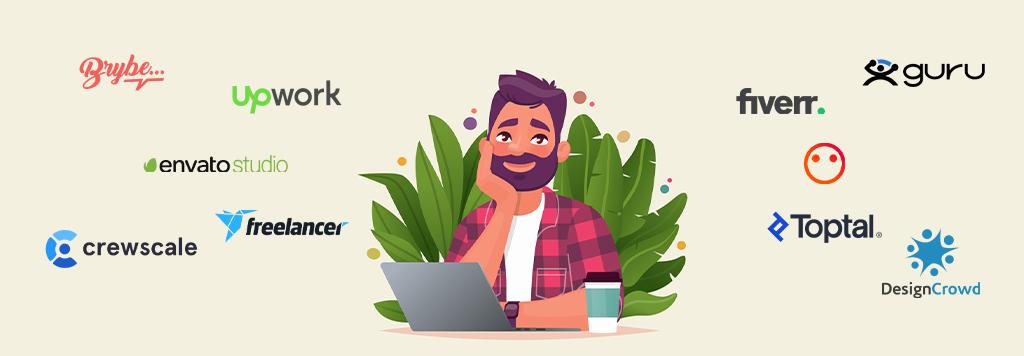
Freelancing Platforms
In the evolving landscape of gig work, various have become crucial for both full-time and part-time freelancers. These platforms not only connect freelancers with potential clients but also serve as marketplaces where skills can shine. Popular options include:
- Upwork: A leading platform catering to a wide range of skills, from writing to coding.
- Fiverr: Known for its unique approach, allowing freelancers to offer “gigs” at various price points.
- Freelancer.com: Facilitates projects through a bidding system, making it suitable for freelancers at all experience levels.
- Guru: Offers a secure way to find freelance opportunities across various industries.
Choosing the right platform can be pivotal for your success as a freelancer. While some freelancers may thrive under the structured approach of platforms like Upwork, others might prefer the creative flexibility offered by Fiverr. Analyzing the features and tools available on each site can help freelancers decide where to invest their time and resources. Here’s a quick comparison of some key features across popular :
| Platform | Best For | Fee Structure |
|---|---|---|
| Upwork | Long-term projects | 20% on the first $500 |
| Fiverr | One-off gigs | 20% per transaction |
| Freelancer.com | Bidding projects | 10% or $5 per project |
| Guru | Long-term clients | 5% to 9% based on membership |

Freelance Graphic Design
In the world of freelancing, graphic design can often feel like walking a tightrope, especially when weighing the demands of full-time versus part-time work. A full-time er may dive headfirst into a sea of projects, often enjoying the rich benefits of consistent income and expansive client relationships. This path offers the chance to cultivate a robust portfolio and establish oneself within the industry. However, it also comes with its own set of stresses, such as tight deadlines and the constant hustle for new clients. On the flip side, part-time freelancers can revel in the freedom of flexibility, managing design projects alongside other commitments. This arrangement allows for a more balanced lifestyle, yet it may occasionally lead to a sense of instability with fluctuating income and limited exposure to bigger projects.
Finding the sweet spot between these two extremes involves understanding the nuances of your personal goals and work style. Consider the following points:
- Time Management: Assess how much time you can realistically dedicate to freelance work without sacrificing your mental health.
- Income Needs: Evaluate your financial obligations to decide which model aligns best with your economic needs.
- Client Expectations: Recognize how client demands differ based on your availability and decide if you’re willing to take on urgent projects.
| Aspect | Full-Time Freelance | Part-Time Freelance |
|---|---|---|
| Income Stability | Higher | Variable |
| Time Flexibility | Limited | High |
| Project Variety | More opportunities | Fewer projects |
| Networking | Broad | Niche |
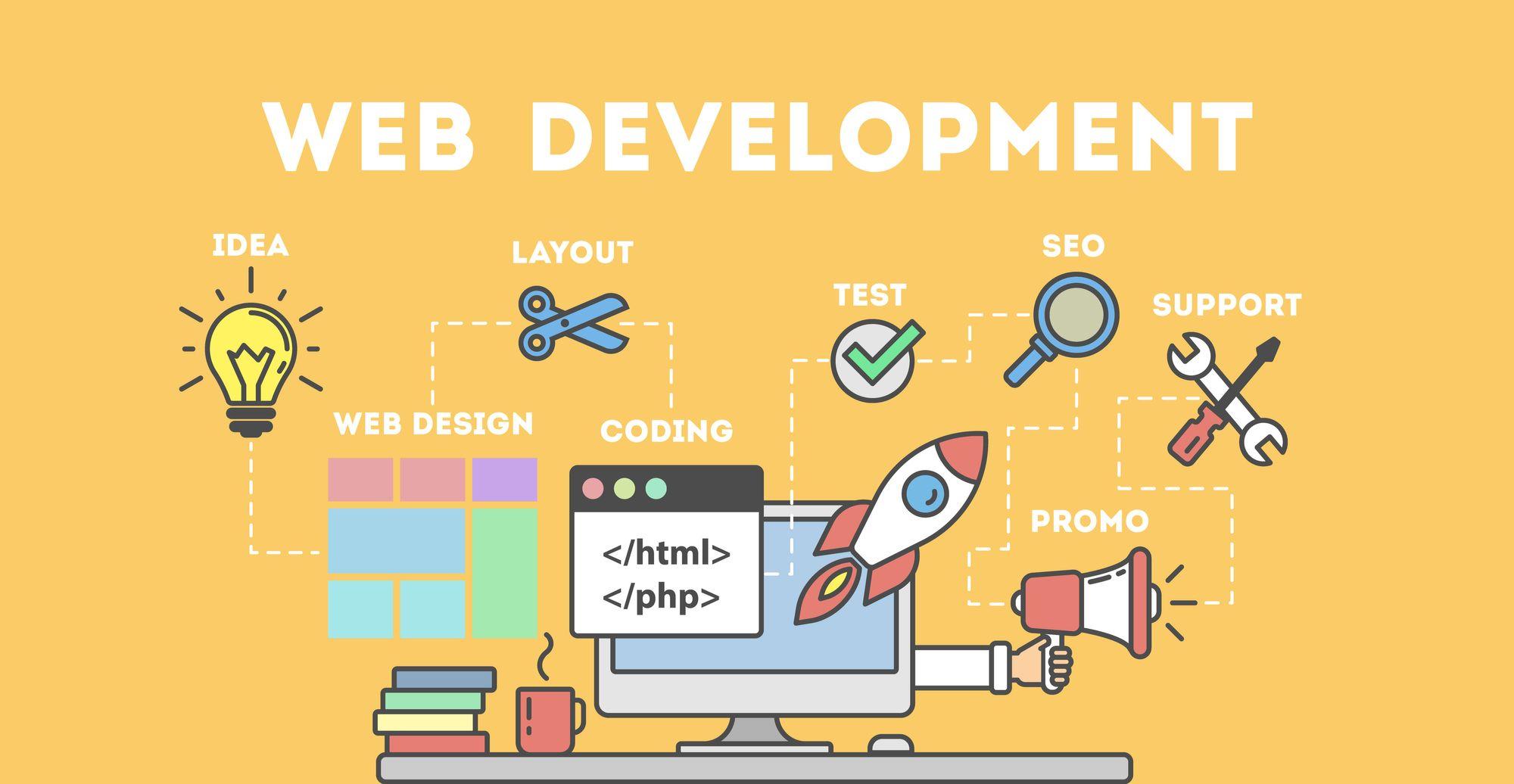
Freelance Web Development
offers a unique opportunity for professionals to flex their creativity while maintaining a flexible schedule. Whether you’re diving in full-time or taking a part-time approach, understanding the core components of successful web development projects is crucial. Key elements include:
- Client Communication: Establishing clear lines of communication ensures that client expectations are met throughout the project lifecycle.
- Time Management: Balancing deadlines and various projects can be tricky, so utilizing tools to manage time effectively is essential.
- Continuous Learning: The tech landscape is constantly evolving; staying updated with the latest trends and technologies helps in maintaining a competitive edge.
In assessing the pros and cons of freelancing, one significant aspect to consider is the impact on work-life balance. Those who choose to freelance full-time often experience:
| Pros | Cons |
|---|---|
| Flexibility: Work whenever and wherever suits you. | Income Instability: Income may fluctuate with client demand. |
| Variety of Work: Engage with diverse projects and industries. | Isolation: Working alone can lead to feelings of loneliness. |
On the other hand, part-time freelancing allows for a more gradual entry, perfect for those still in full-time employment or seeking supplementary income. This approach can nurture a sustainable growth path while managing risks effectively.

Freelance Marketing Consultant
Stepping into the realm of freelance marketing brings with it a unique set of dynamics and challenges, whether you’re embarking on this journey full-time or part-time. A full-time enjoys the advantage of availability, allowing for deeper client relationships and the capacity to dive into larger projects. This often translates to a predictable income stream, yet it demands unwavering dedication and the constant pursuit of new business. Conversely, part-time freelancing offers the flexibility to maintain a steady day job while exploring personal passions in marketing. Though the engagement may be more limited, this approach can serve as a fantastic testing ground for skills, helping you build a robust portfolio at a manageable pace.
As with any venture, the decision hinges on what aligns best with your lifestyle and career aspirations. Here are some factors to consider:
- Time Management: Assess your current commitments and how they intersect with your freelance goals.
- Financial Stability: Determine your revenue needs and how much time you can allocate to securing clients.
- Market Demand: Analyze the demand in your niche and adapt your strategy accordingly.
For a clearer perspective, consider these side-by-side comparisons:
| Aspect | Full-Time | Part-Time |
|---|---|---|
| Income Potential | Higher, with steady clients | Variable, depending on hours |
| Work Flexibility | Limited; structured schedule | High; adaptable to other commitments |
| Networking Opportunities | Extensive; available at events | Selective; depends on commitment |

Freelancing for Beginners
Embarking on a freelance journey means navigating the delicate balance between freedom and responsibility. For those just starting, understanding whether to dive into full-time or part-time freelancing can significantly impact not only your workload but also your lifestyle. If you choose to freelance full-time, the allure of being your own boss comes with the weight of securing a steady stream of clients and managing all aspects of your business. Alternatively, part-time freelancing allows for a smoother transition into the gig economy, enabling you to maintain a reliable income from other employment while testing the waters of self-employment.
As you weigh your options, it’s essential to consider your personal goals and commitments. Think about these factors when deciding:
- Financial Stability: Can you afford to freelance full-time, or do you need a safety net?
- Time Management: Are you prepared to manage multiple projects alongside a full-time job?
- Work-Life Balance: How important is your personal time and freedom?
Here’s a simple comparison table to help visualize the differences:
| Aspect | Full-Time Freelancing | Part-Time Freelancing |
|---|---|---|
| Income Stability | Variable | More Stable |
| Client Acquisition | Constant Effort Required | Supplementary |
| Flexibility | High | Moderate |
| Risk | Higher | Lower |
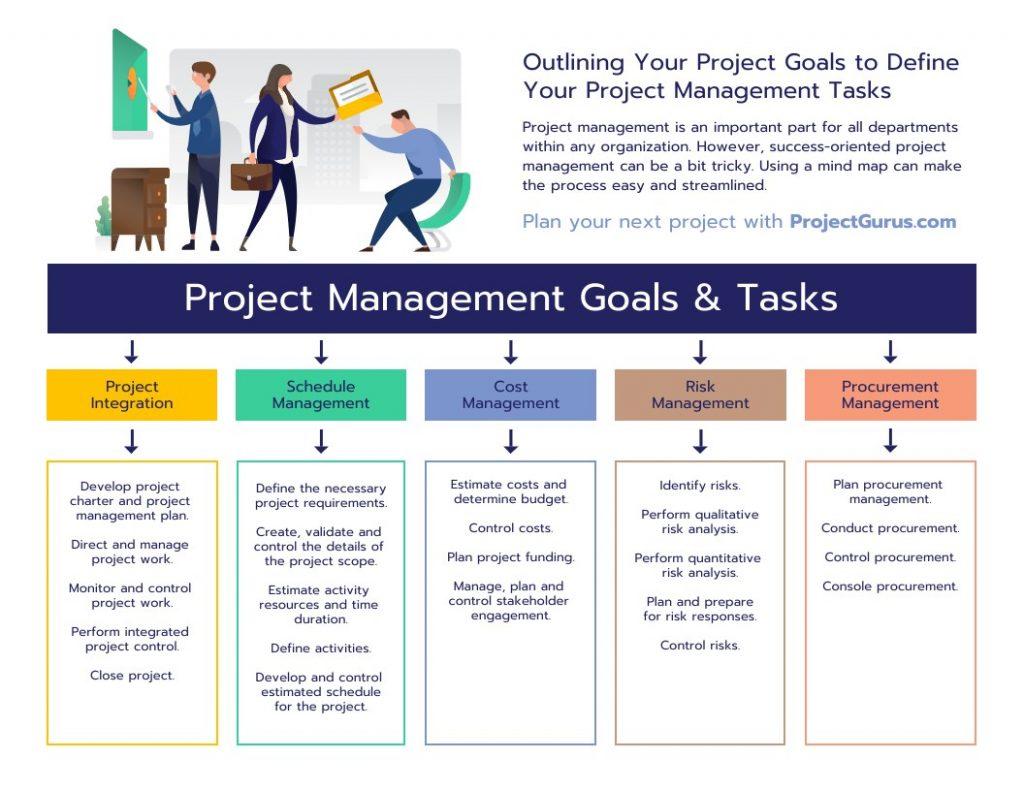
Freelance Project Management
When navigating the waters of , the distinction between full-time and part-time roles becomes crucial. Each arrangement presents unique challenges and opportunities that can shape your approach and workflow. Full-time freelancers often dive deep into long-term projects, managing their time through extensive planning and continual client communication. This can lead to a polished, cohesive final product but may also risk burnout if workload balance isn’t maintained. On the other hand, part-time freelancing requires a nimble ability to juggle multiple projects, often with varying client expectations. Success in this model hinges on stellar organizational skills and effective time management, as well as a strategic understanding of when to say no to additional work.
To further explore the efficiencies of different freelancing capacities, consider the following aspects:
- Client Relationships: Full-time freelancers often enjoy deeper relationships with fewer clients, while part-timers must cultivate quick connections across a broader range.
- Income Stability: Full-time engagements generally provide steadier income, whereas part-time roles may offer variability but often leave room for additional side projects.
- Stress Levels: Balancing diverse tasks as a part-timer can increase stress, while full-time roles may experience stress from project deadlines and expectations.
| Aspect | Full-Time Freelancing | Part-Time Freelancing |
|---|---|---|
| Workload | Consistent | Variable |
| Client Interaction | Deep | Broad |
| Flexibility | Limited | High |
| Income Potential | Stable | Potentially higher with side gigs |

Remote Freelance Jobs
The rise of digital nomadism has significantly transformed the landscape of employment, allowing professionals the freedom to pursue across various sectors. This flexibility enables individuals to create their own schedules and work from nearly anywhere in the world, making it a popular choice for those seeking a more balanced life. However, navigating the world of freelancing isn’t without its challenges. Depending on personal circumstances, such as financial goals and work-life preferences, freelancers must weigh options between full-time and part-time commitments. Here are some of the primary considerations:
- Time Management: Full-time freelancers often face a heavier workload, which can lead to burnout without careful planning.
- Income Stability: Part-time freelancing may offer a safety net if you’re unsure about diving in fully, providing a steady income while exploring opportunities.
- Client Relationships: Establishing and maintaining lasting client relationships may require different strategies depending on time investment.
Exploring different types of remote freelance roles can also provide interesting insights into potential career paths. Many individuals find themselves gravitating toward fields like writing, graphic design, or software development. The flexibility associated with these roles can be highly appealing. Below is a table summarizing popular freelance job categories:
| Job Category | Skills Required | Average Hourly Rate |
|---|---|---|
| Writing | Creativity, Editing, Research | $25 – $100 |
| Graphic Design | Photoshop, Creativity, UX/UI | $30 – $150 |
| Web Development | HTML, CSS, JavaScript | $40 – $200 |

Freelance Photography
offers a unique opportunity for creatives to delve into various niches while crafting their own schedules. Whether you’re a full-time photographer or balancing it as a part-time endeavor, the versatility is unmatched. Full-time photographers often embrace the challenge of building a robust portfolio and client base, enabling deeper investments in marketing and equipment. Conversely, part-time freelancers can explore multiple avenues—perhaps embracing different genres such as weddings, portraits, or commercial work without the overwhelming pressure of making a full income solely from photography.
However, both paths come with their own intricacies. A challenge frequently faced by part-time photographers is the struggle to maintain a consistent presence in the market. To address this, they may often employ strategies such as:
- Leveraging social media to showcase portfolios.
- Networking at local events and online communities.
- Special promotions to entice clients during off-peak times.
Meanwhile, full-time professionals must juggle business management tasks alongside creativity. Below is a comparison of essential considerations for each role:
| Factor | Full-Time | Part-Time |
|---|---|---|
| Time Commitment | Full-time dedication | Flexible scheduling |
| Income Stability | Regular income | Variable income |
| Client Relationships | Long-term partnerships | Casual connections |

Freelance Video Editing
Embracing can be a journey marked by exhilarating projects and creative freedom. However, navigating the realms of full-time versus part-time freelancing requires a clear understanding of the demands and benefits associated with each path. In a full-time role, you might find yourself immersed in a singular vision, allowing for deep dives into projects and the establishment of long-term client relationships. The routine can lead to a steady workflow, offering the comfort of a predictable income while honing your craft in a focused environment.
On the other hand, part-time opens doors to diverse experiences and the ability to engage with various clients and styles. This flexibility lets you balance other commitments while building a portfolio that showcases your versatility. However, the juggling act can be challenging, as the need to consistently manage time and client expectations grows. Consider how you want to allocate your resources; the chart below helps illustrate some key factors to ponder when making your decision:
| Aspect | Full-Time Freelancing | Part-Time Freelancing |
|---|---|---|
| Income Stability | Consistent | Variable |
| Client Relationships | Long-term | Diverse |
| Work Hours | Set schedule | Flexible |
| Creative Challenges | Focused | Innovative |

Freelance Social Media Manager
The role of a social media manager in the freelance market is as dynamic as it is rewarding. With the rise of digital marketing, businesses increasingly seek skilled individuals to enhance their online presence. As a freelancer, you can choose your level of commitment, whether that means taking on a few clients part-time or diving into a full-time schedule. Each path offers unique advantages:
- Flexibility: Part-time roles allow you to balance other commitments while still cultivating skills and connections.
- Income Variability: Full-time freelancing often leads to more consistent income if you establish long-term clients.
- Portfolio Diversity: With part-time gigs, you can explore different industries and niches, enhancing your expertise.
- Work-Life Balance: Freelancing part-time can better suit personal time and responsibilities.
The decision between full-time and part-time freelancing can also affect the type of projects you’ll handle. Full-time freelancers may find their schedules packed with more extensive project scopes, including:
| Project Type | Comments |
|---|---|
| Content Creation | Involves regular postings and campaign development. |
| Analytics Reporting | Frequent updates to track progress and trends. |
| Client Communication | More time dedicated to maintaining and nurturing relationships. |
Part-time freelancers might experience a variety of short-term projects that allow for rapid skill accumulation. The key here is to select the path that aligns not only with your financial goals but also with your personal aspirations and lifestyle preferences.

Freelance SEO Expert
s play a critical role in shaping online visibility for businesses, regardless of whether they work full-time or part-time. With the ever-evolving landscape of search engine algorithms, these professionals must constantly adapt and innovate to ensure their clients rank highly. Some key advantages of freelancing in this field include:
- Flexibility: Freelancers can choose their hours and projects, allowing them to tailor their work-life balance.
- Diverse Exposure: Working with various clients exposes freelancers to different industries, enhancing their skills and versatility.
- Control Over Rates: Experienced freelancers can set competitive rates, aligning their income with their expertise and the value they provide.
However, pursuing a career as a also presents challenges that differ based on the level of commitment. Full-time freelancers might face:
| Challenges | Full-Time Freelancers | Part-Time Freelancers |
|---|---|---|
| Client Acquisition | High pressure to maintain a steady pipeline | Flexibility to take on fewer clients |
| Time Commitment | Longer hours to meet deadlines | Limited time may lead to concentrated effort |
| Networking | Continuous need for industry presence | Potential to network within current full-time job |

Freelance Copywriting
In the world of , the choice between full-time and part-time commitments can profoundly shape your professional journey. Those who choose full-time freelancing often enjoy the freedom to immerse themselves in projects without the constraints of a traditional job, allowing for deeper creative exploration. However, this path also comes with challenges, such as the need to secure consistent clients and manage finances independently. On the flip side, part-time freelancing offers a unique opportunity to blend stability with creativity. Writers can maintain a steady income through a day job while gradually building their freelance portfolio, paving the way for a potential full-time transition in the future.
Ultimately, the choice hinges on personal circumstances and career aspirations. Here are a few factors to consider in your decision-making process:
- Income Stability: Full-time freelancing may provide higher income potential but comes with unpredictability.
- Time Management: Part-time freelancers must skillfully juggle time between full-time work, personal life, and client demands.
- Client Relationships: Establishing long-term connections can take longer with part-time work due to limited capacity.
- Professional Growth: Full-time copying offers more opportunities for learning and skill development through wider project exposure.

Freelance Business Tips
Freelancing can often feel like a tightrope walk, especially when deciding between full-time and part-time commitments. Both paths have their perks and challenges, and the right choice largely depends on your personal circumstances. Full-time freelancing allows for deeper engagement with clients and projects, fostering stronger relationships and potentially higher pay. However, it requires stringent self-discipline and excellent time management to juggle multiple projects without burning out. In contrast, part-time freelancing offers flexibility, allowing you to maintain a work-life balance while exploring diverse opportunities. This approach can be an excellent way to ease into freelancing or supplement your income without the pressures of full-time hours.
To effectively navigate your freelance journey, it’s essential to establish a clear set of goals and boundaries. Consider these strategies to help you manage your freelance business, whether full-time or part-time:
- Set realistic expectations: Understand what you can realistically achieve in your available time.
- Organize your financial transactions: Use accounting software to keep track of income and expenses seamlessly.
- Network actively: Building relationships is crucial for both types of freelancing, so attend events and connect online.
- Refine your pitch: A well-crafted pitch will help you secure clients, regardless of the time you have to dedicate.
| Aspect | Full-Time Freelancing | Part-Time Freelancing |
|---|---|---|
| Income Potential | Higher potential due to more hours | Supplemental income |
| Flexibility | Lower; structured schedule | Higher; adjustable commitments |
| Work-Life Balance | Challenging; more burnout risk | Easier; maintain job or lifestyle |
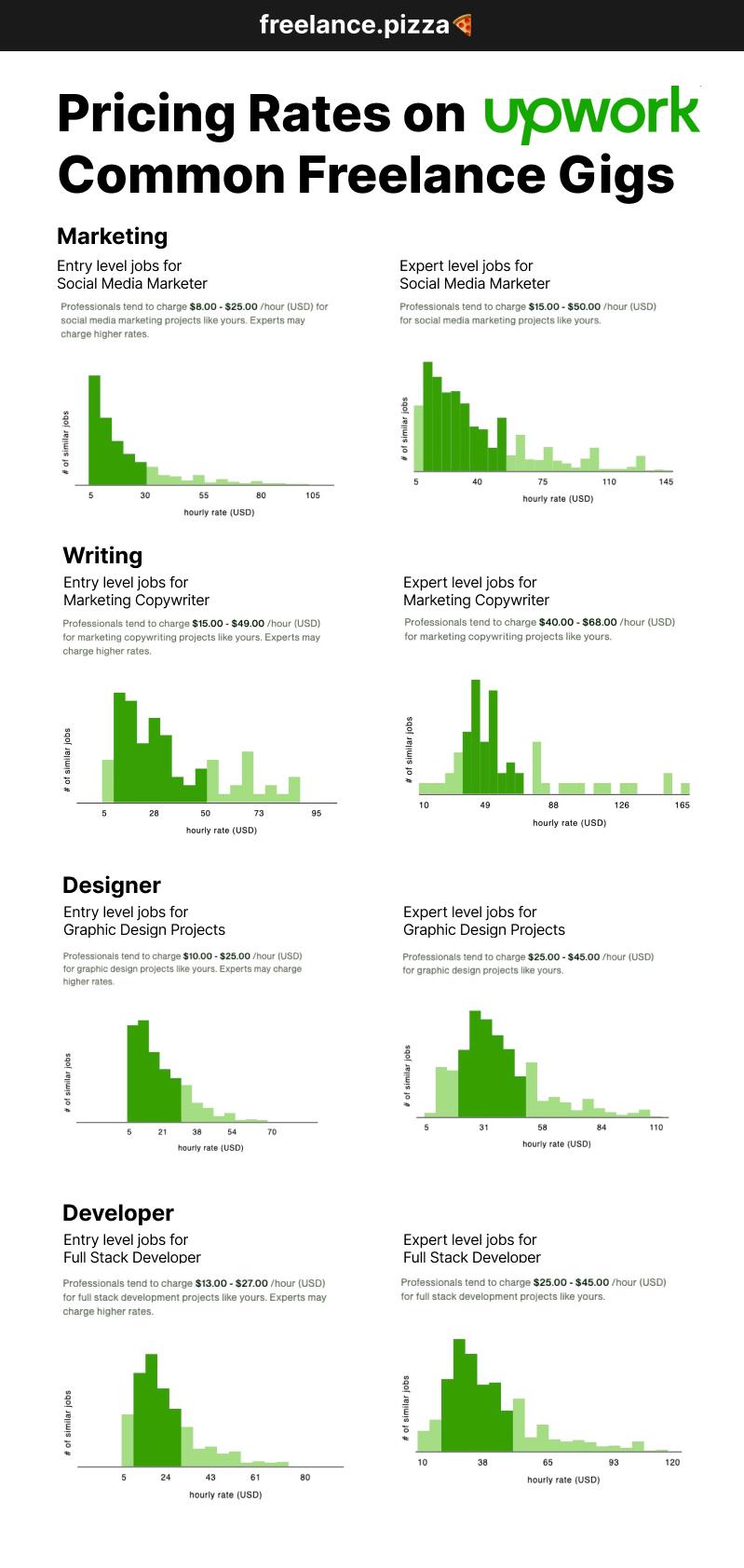
Freelance Rates and Pricing
When navigating the world of freelancing, understanding how to set your rates can be a challenging but crucial element. Whether you’re a full-time freelancer or balancing a part-time gig alongside other commitments, it’s essential to establish a pricing strategy that reflects your skills and market demand. To create a sustainable income, consider the following factors that can impact your rates:
- Experience level: More seasoned freelancers typically command higher rates due to their proven expertise.
- Project complexity: Difficult projects with specialized skills often require premium pricing.
- Client budget: Tailoring your rates to fit within a client’s budget can open doors to new opportunities.
- Market research: Regularly evaluate competitor rates to ensure your pricing remains competitive.
It’s also beneficial to establish a tiered pricing structure, offering various packages that cater to different client needs. Below is an example of how you might structure your services:
| Package | Description | Price |
|---|---|---|
| Basic | 1 hour of consultation | $50 |
| Standard | 5 hours of project work | $225 |
| Premium | 10 hours of comprehensive strategy | $400 |
By clearly outlining your packages, potential clients can more easily understand the value of your services, and you remain positioned to find that delicate balance between affordability and ensuring fair compensation for your expertise. This structured approach not only highlights your professionalism but also sets clear expectations and boundaries for both you and your clients.
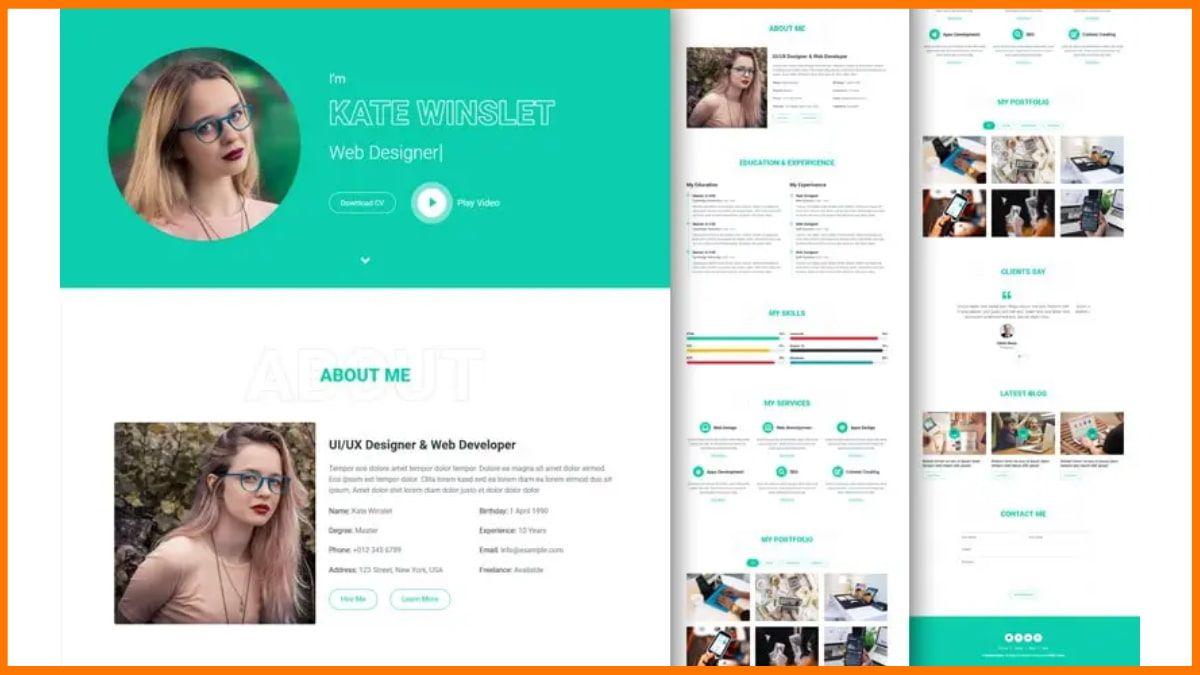
Building a Freelance Portfolio
Creating a compelling freelance portfolio is an essential step in establishing your brand and showcasing your skills. To effectively build your portfolio, consider the following strategies that can help you attract potential clients:
- Select Your Best Work: Curate pieces that reflect your highest quality work, aligning with the services you want to offer.
- Diversify Your Projects: Include a variety of work that demonstrates your versatility, such as different styles, formats, or industries.
- Add Client Testimonials: Incorporating feedback from previous clients can enhance credibility and provide reassurance to prospective clients.
- Keep it Updated: Regularly refresh your portfolio with new projects to stay relevant and keep potential clients engaged.
Moreover, presenting your portfolio online with a clean, professional layout can significantly impact how clients perceive your work. Consider using a structured format when designing your portfolio:
| Element | Description |
|---|---|
| Hero Section | Your title and tagline that captures your essence as a freelancer. |
| Project Showcase | Visual thumbnails linking to detailed case studies of your projects. |
| About Me | A brief bio that highlights your background and what you bring to the table. |
| Contact Information | Easy access for clients to reach out and inquire about your services. |

Freelance Contract Templates
When embarking on a freelance journey, having a solid contract in place is crucial to protect both the freelancer and the client. Effective contract templates not only streamline the onboarding process but also establish clear expectations. A standard freelance contract should include the following essential components:
- Scope of Work: Define what tasks will be completed and the timeline for deliverables.
- Payment Terms: Details on compensation, including rates, pay schedule, and methods of payment.
- Ownership Rights: Clarify who owns the work upon completion and any rights to use the material.
- Confidentiality Clause: Protect sensitive information shared throughout the project.
- Termination Conditions: Outline the process and conditions under which either party can end the contract.
Many freelancers opt for customizable contract templates to suit their specific industries or project types. Here’s a brief comparison of two popular options:
| Template Type | Key Advantage | Best For |
|---|---|---|
| Standard Contract | Comprehensive coverage of all essential elements | General freelance work across various industries |
| Industry-Specific Contract | Tailored terms that cater to specific legal and professional standards | Freelancers in niche markets like photography, writing, or design |

Freelance Time Management
Effective time management is the cornerstone of a successful freelance career, a balancing act that determines your productivity and overall satisfaction. Whether you’re juggling multiple clients or working on personal projects, establishing a structured routine can make all the difference. Consider adopting techniques such as:
- Prioritization: Identify the most critical tasks and tackle them first.
- Time Blocking: Allocate specific chunks of time for different activities to minimize distractions.
- Setting Boundaries: Clearly define your working hours to maintain a healthy work-life balance.
Technology can be a freelancer’s best friend when it comes to managing time effectively. Utilize digital tools and apps designed to streamline your workflow and organize your tasks. Below is a simple comparison of popular tools that can enhance your productivity:
| Tool | Key Feature | Best For |
|---|---|---|
| Trello | Visual task management with boards and lists | Project organization |
| Toggle | Time tracking with reporting capabilities | Understanding time spent on tasks |
| Focus@Will | Music scientifically optimized for concentration | Enhancing focus during work sessions |

Freelance Networking
Engaging with others in the freelance community is crucial for discovering new opportunities and expanding your reach. Whether you’re a full-time freelancer juggling multiple projects or a part-timer looking to make extra income, establishing a robust network can open doors to collaborations that might not have been possible otherwise. Here are a few effective ways to connect with fellow freelancers and potential clients:
- Social Media Groups: Join Facebook, LinkedIn, and other professional groups where freelancers share advice, job leads, and experiences.
- Networking Events: Attend local meetups, workshops, and industry conferences to meet professionals in your field.
- Online Platforms: Engage on platforms like Upwork and Fiverr, not just to find gigs but to connect with other freelancers.
Building connections is not only about self-promotion but also about contribution. By sharing your knowledge and offering assistance to others, you cultivate relationships that can lead to future collaborations or referrals. Consider organizing or participating in:
- Webinars: Host or attend virtual events where you can share insights and gain new perspectives.
- Mastermind Groups: Collaborate with a small group of freelancers who share similar goals to support and motivate each other.
- Follow-Up Coffee Chats: After meeting someone new, suggest a virtual coffee chat to keep the conversation going.
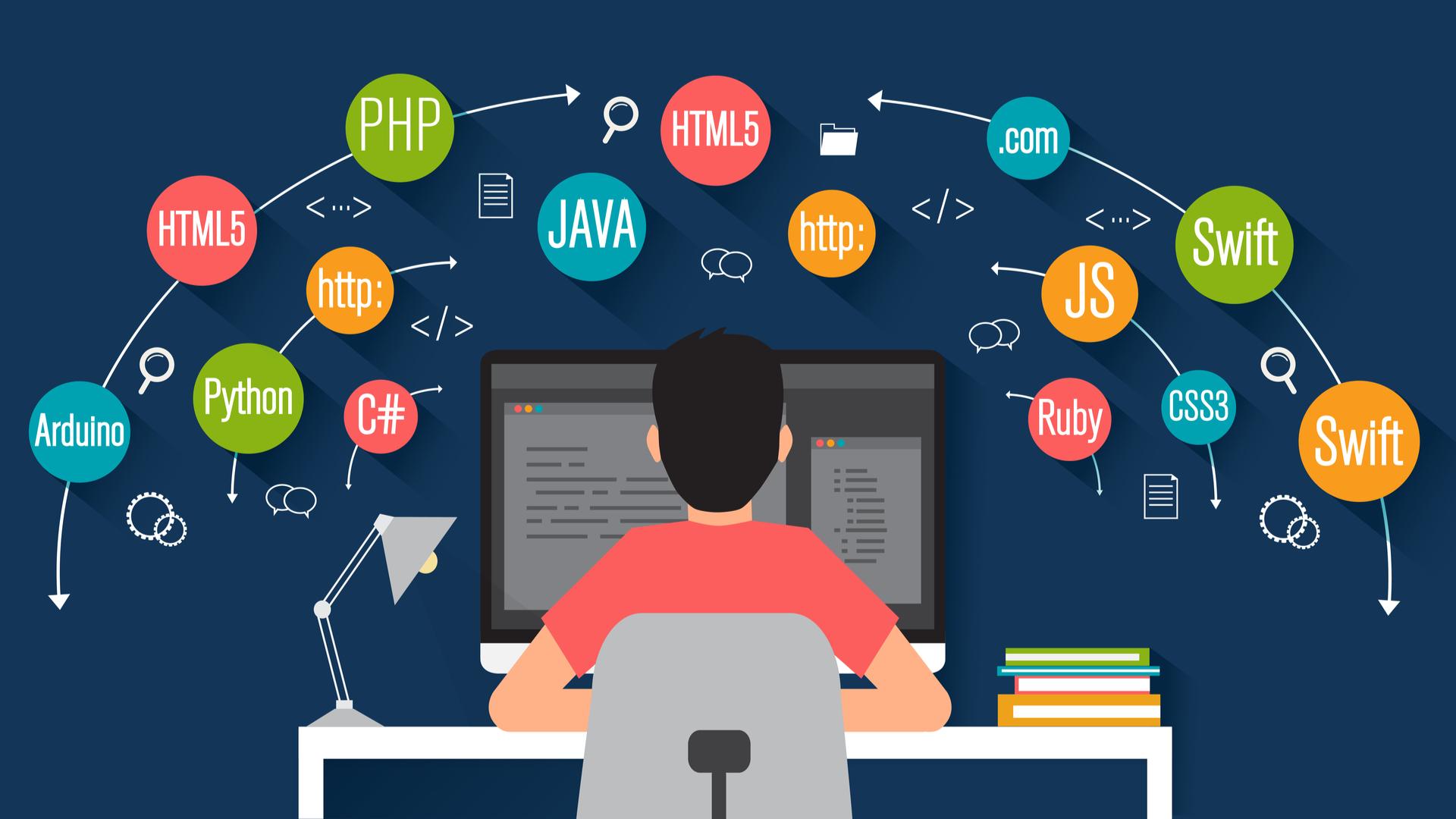
Freelancing in Tech
Freelancing in the tech industry provides a unique landscape for professionals to explore diverse opportunities and projects. Whether you choose to dive in full-time or opt for part-time engagements, understanding the nuances of each approach is vital. Full-time freelancers often benefit from:
- Consistent Income: A stable flow of projects can lead to a predictable income, allowing for better financial planning.
- Client Relationships: More time can be dedicated to building lasting relationships, which may lead to repeat business.
- Skill Deepening: Full immersion in projects allows for significant skill enhancement and specialization.
On the other hand, part-time freelancing offers flexibility and the chance to balance other commitments. Professionals often appreciate being able to:
- Diversify Experience: Working on varied projects can enhance adaptability and broaden the skillset.
- Maintain a Work-Life Balance: Balancing a part-time freelancing schedule with a full-time job can reduce stress and lead to greater satisfaction.
- Explore Different Industries: Part-time freelancing opens doors to work across multiple sectors, enriching professional exposure.
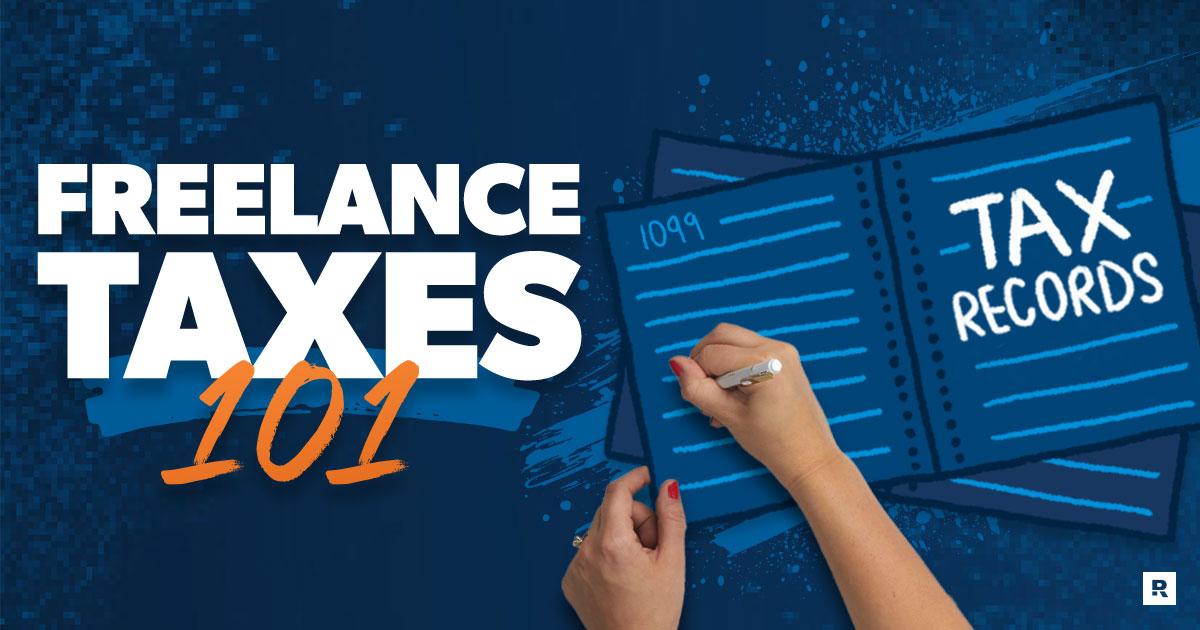
Freelance Taxes and Accounting
Understanding the intricacies of managing finances is crucial for any freelancer, whether you’re diving into full-time work or balancing it with a part-time gig. Freelancers often face unique challenges when it comes to taxes and accounting. Unlike traditional employees, freelancers bear the full responsibility for their tax obligations, which can lead to difficulties in budgeting and planning. Below are key considerations to keep in mind:
- Quarterly Tax Payments: Unlike the standard annual tax payment schedule, freelancers are usually required to make estimated quarterly payments. Failing to do so can result in penalties.
- Business Deductions: Freelancers can deduct various expenses such as home office costs, supplies, and even software subscriptions. Keeping meticulous records of these expenses is essential.
- Self-Employment Tax: Self-employed individuals must pay both income tax and self-employment tax, which covers Social Security and Medicare. This tax is often overlooked but adds to overall tax liability.
Moreover, effective accounting practices play a fundamental role in a freelancer’s financial health. Utilizing reliable accounting software can simplify tracking income, expenses, and invoicing. Consider the following tools and strategies:
| Tool | Purpose | Benefits |
|---|---|---|
| QuickBooks | Bookkeeping | Invoicing and expense tracking |
| Wave | Accounting | Free services for small businesses |
| Toggl | Time Tracking | Track hours for billing clients |
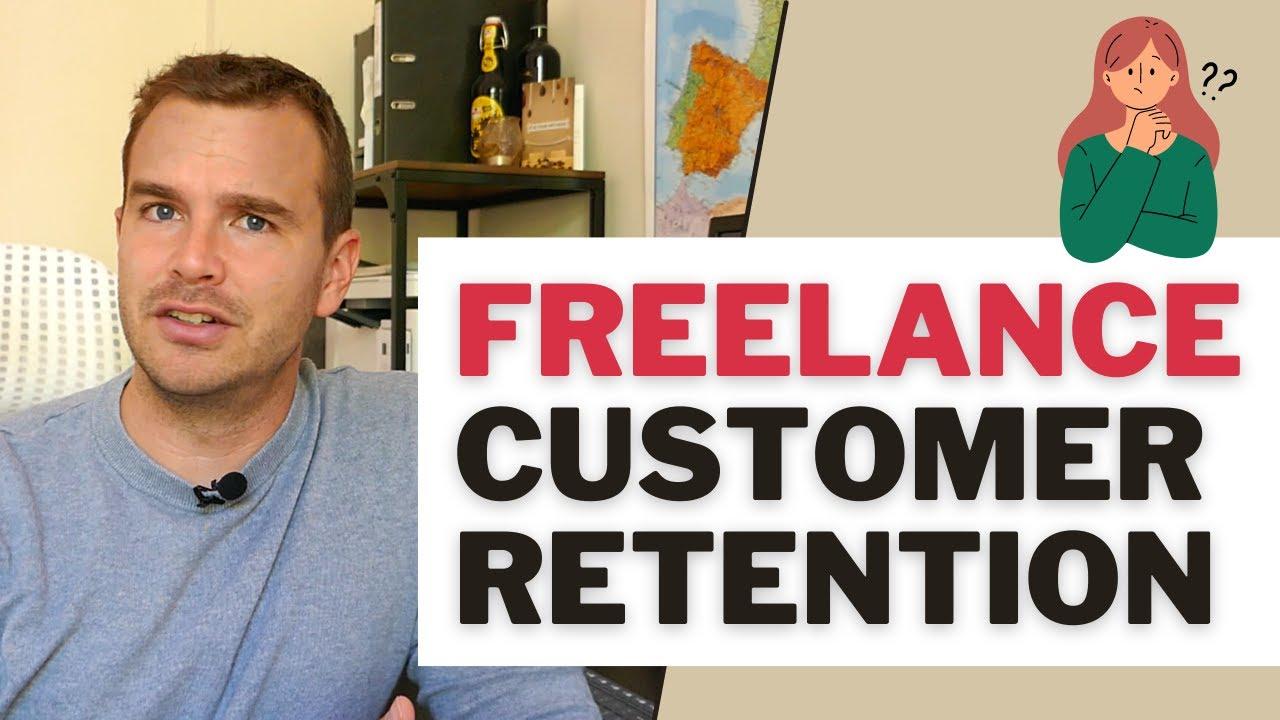
Freelance Client Retention
Retaining freelance clients is often as crucial as acquiring new ones, especially in the highly competitive landscape of freelancing. To foster lasting relationships, freelancers should focus on delivering exceptional service that consistently exceeds client expectations. This can be achieved by maintaining clear communication, setting realistic timelines, and providing regular updates on project progress. Creating a personalized experience can also make clients feel valued, strengthening their loyalty to your services. Consider implementing a feedback loop, where clients can voice their thoughts on your results; this not only improves your work but also shows clients their opinions matter.
Moreover, incorporating a structured follow-up system post-project can significantly enhance client retention. Sending follow-up emails to check on the client’s satisfaction or offering additional services based on their evolving needs creates an impression of genuine care and involvement. You might also want to explore retainer agreements or packages that encourage clients to commit to a long-term partnership. Here’s a simplified table showcasing different retention strategies:
| Retention Strategy | Description |
|---|---|
| Regular Check-ins | Schedule periodic calls or emails to touch base. |
| Feedback Survey | Implement brief surveys to gather insights. |
| Value-Added Services | Offer add-ons related to their projects periodically. |
| Referral Discounts | Provide discounts for any referred clients. |

Freelancing Full-Time vs Part-Time
When considering freelancing, the choice between full-time and part-time often hinges on personal circumstances, goals, and lifestyle preferences. Full-time freelancers usually embrace the freedom that comes with being their own boss, committing to a project-based workload that can result in higher earnings and the ability to take on more clients. However, this path demands a greater investment of time and energy, as building a sustainable business often requires extensive networking, marketing, and administrative efforts. Factors such as health insurance, retirement plans, and steady income must also be taken into account, as these are typically not provided in the freelancing model.
In contrast, part-time freelancing offers a more flexible approach, allowing individuals to maintain a steady income from a traditional job while exploring their passions on the side. This arrangement can lead to a lower stress level and a platform for testing the waters of self-employment without the immediate pressure of replacing full-time income. It may also provide a more balanced life, offering opportunities to develop skills, build a portfolio, and establish client relationships at a manageable pace. However, it can sometimes limit the number of projects taken on, potentially affecting long-term growth in the freelance space.

Freelance Job Boards
In the dynamic landscape of freelancing, job boards serve as vital platforms that connect talent with opportunities. These specialized websites cater to a variety of skills and industries, offering freelancers the chance to showcase their portfolios and pitch their services. Some of the most popular job boards include:
- Upwork – A vast marketplace that connects freelancers with clients across numerous sectors.
- Fiverr – A platform where freelancers can offer their services starting at $5, appealing to a diverse clientele.
- Freelancer – This site hosts projects that range from short-term gigs to long-term contracts.
- Guru – A user-friendly site that allows freelancers to create profiles and showcase their past work.
- PeoplePerHour – A platform ideal for finding project-based work quickly.
When considering part-time versus full-time freelancing, the choice of job boards becomes crucial. Some platforms are better suited for quick, gig-style work, while others offer projects that require deeper commitment and skill. Below is a comparison of freelancer preferences based on commitment:
| Job Board | Best For | Commitment Level |
|---|---|---|
| Upwork | Long-term projects | Full-Time |
| Fiverr | Quick tasks | Part-Time |
| Freelancer | Diverse projects | Both |
| PeoplePerHour | Hourly work | Part-Time |

Freelance Branding Strategies
Creating a strong personal brand is crucial in the freelance world, whether you’re juggling projects full-time or part-time. Your brand acts as a visual and emotional touchpoint that speaks to your target audience. Here are some strategies to enhance your branding:
- Define Your Niche: Understand your unique skills and the audience you wish to serve. Tailoring your services can help you stand out.
- Create a Consistent Visual Identity: Utilize a consistent color palette, logo, and typography across all platforms to reinforce recognition.
- Craft a Compelling Narrative: Share your journey and expertise through storytelling, showcasing what distinguishes you from others in your field.
Engagement with your audience through various channels amplifies your brand. Whether on social media, blogs, or networking events, nurturing relationships can lead to valuable referrals. Consider these methods to foster connectivity:
| Strategy | Benefit |
|---|---|
| Social Media Interaction | Builds community and establishes authority. |
| Networking Events | Expands professional connections and opportunities. |
| Email Newsletters | Keeps your audience informed and engaged with updates. |

Freelancing in Graphic Design
As a graphic designer venturing into freelancing, you will encounter distinct challenges and rewards depending on your chosen commitment level—full-time or part-time. Full-time freelancing allows you to immerse yourself completely in your craft, leading to deeper client relationships and potentially higher, more stable income. However, it also requires a robust workflow, effective self-marketing, and a constant influx of projects to sustain yourself. In contrast, part-time freelancing offers the flexibility to juggle a stable job alongside your creative pursuits, making it an attractive option for those hesitant to abandon the security of a regular paycheck. Yet, this path often means less time for project development and the challenge of balancing schedules, which can stifle growth and client outreach.
Understanding these dynamics can help you chart your course as a freelancer. Here are some considerations for each approach:
- Flexibility: Part-time allows more adaptability to personal commitments.
- Income Stability: Full-time may lead to a more predictable financial situation.
- Network Building: Full-time provides opportunities for deeper client engagement.
- Time Management: Part-time requires balancing both jobs efficiently.
| Aspect | Full-Time Freelancing | Part-Time Freelancing |
|---|---|---|
| Work Hours | Full Availability | Limited Hours |
| Income Potential | Higher | Supplemental |
| Client Commitment | Deeper Relationships | Shorter Engagements |
| Risk Factor | Higher | Lower |

Freelance Personal Development
Embarking on a freelance career brings with it a unique set of challenges and opportunities for personal development. Whether diving into full-time freelancing or managing a part-time gig alongside other commitments, individuals discover vital skills that contribute to their professional growth. Successful freelancers often cultivate competencies such as time management, self-discipline, and effective communication. These skills not only enhance their freelance careers but also enrich personal life experiences, fostering a balanced existence that thrives on flexibility.
The choice between full-time and part-time freelancing often hinges on personal goals and lifestyle preferences. Each path offers its own distinct advantages that can shape one’s personal development journey:
- Full-Time Freelancing: Provides an immersive experience that accelerates skill acquisition and business acumen.
- Part-Time Freelancing: Allows for the exploration of diverse interests, supporting a well-rounded personal growth while maintaining stable income from other sources.
- Networking Opportunities: Both paths open doors to connect with industry peers, sharing insights that contribute to a richer professional development experience.
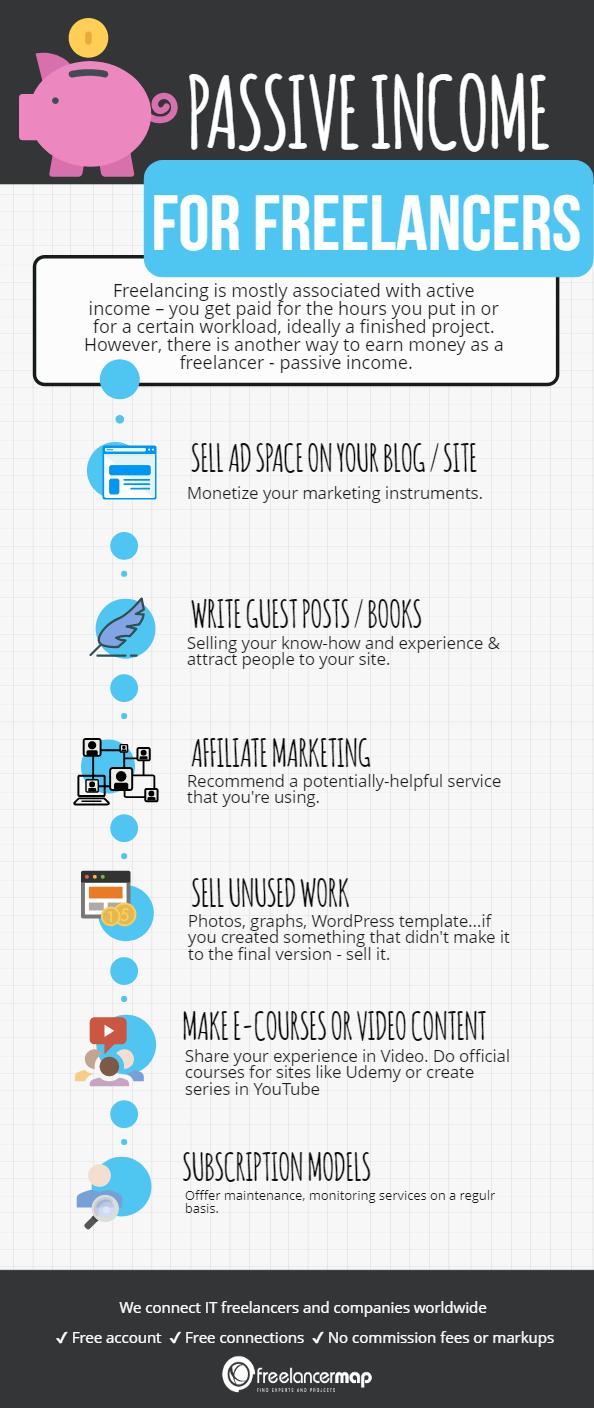
Freelance Income Diversification
Diversifying your freelance income can be a game changer in building a sustainable career. It allows you to not only engage with various markets but also mitigates risks associated with dependency on a single source of income. Consider exploring different avenues such as:
- Offering Diverse Services: If you’re a graphic designer, think about adding web design or social media management to your portfolio.
- Working with Multiple Clients: Cultivating relationships with a mix of long-term clients and one-off projects can help ensure more consistent income.
- Passive Income Streams: Create digital products like eBooks or online courses that can continue to generate revenue over time.
Another effective strategy involves identifying your strengths and repackaging them in different formats to attract a wider audience. For instance, conducting workshops or webinars related to your expertise can open up new client bases while providing valuable learning experiences for attendees. A streamlined approach to diversification may include:
| Strategy | Description |
|---|---|
| Consulting | Leverage your experience to provide advice to businesses. |
| Affiliate Marketing | Promote products or services and earn commissions. |
| Content Creation | Start a blog or YouTube channel to monetize your niche. |

Freelance Career Growth
As freelance professionals navigate the complexities of their careers, growth can often feel like a balancing act. Transitioning from a part-time to a full-time freelance lifestyle opens new avenues for expansion, but it also demands a proactive approach to skill enhancement and client management. To thrive in this environment, freelancers should focus on several key strategies:
- Investing in Continuous Learning: Keep pace with industry trends and emerging technologies through online courses and certifications.
- Building a Strong Portfolio: Showcase diverse projects that highlight your skill set and adaptability to attract more clients.
- Networking Effectively: Attend industry events and engage on professional platforms to create valuable connections.
- Setting Clear Goals: Define short-term and long-term objectives that guide career progression and maintain focus.
For those considering how to balance full-time and part-time freelancing, understanding the impact on income and work-life harmony is crucial. A clear comparison of schedules can aid in decision-making:
| Freelance Type | Income Potential | Flexibility | Workload |
|---|---|---|---|
| Full-Time | Higher stability and regular earnings | Moderate; dependent on client commitments | Consistent and often demanding |
| Part-Time | Varied; potential for supplemental income | High; more freedom to choose projects | Flexible but can be irregular |
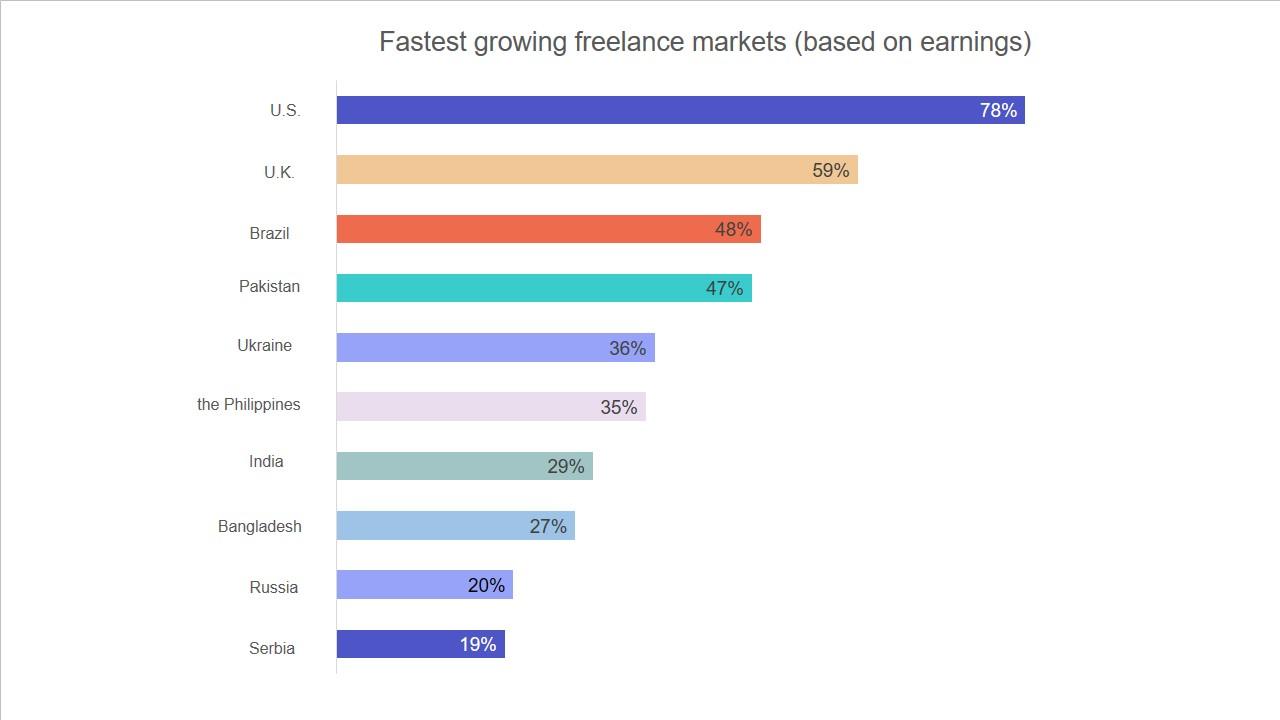
Freelance Market Trends 2024
As we move into 2024, the freelance landscape is evolving rapidly, with new trends emerging that reflect the shifting preferences of both workers and clients. One highlighted trend is the growing demand for specialized skill sets. Freelancers who can offer niche expertise in areas such as digital marketing strategies, data analysis, and software development are likely to see increased opportunities. Moreover, the rise of remote work has led to an influx of clients willing to hire freelancers from diverse geographical locations, emphasizing the importance of flexibility in service offerings.
Another noteworthy trend is the blurring of lines between full-time and part-time freelancing. Many professionals are opting for hybrid models, combining stable part-time jobs with freelance projects. This approach allows for greater financial security while still enabling personal creative pursuits. Data from recent surveys indicates that freelancers now prioritize factors such as work-life balance, autonomy, and job satisfaction over traditional metrics of success like income alone. Below is a summary of the key factors influencing freelance choices in 2024:
| Factor | Influence |
|---|---|
| Work-Life Balance | High priority for freelancers choosing their workload. |
| Autonomy | Desire for self-direction in projects and schedules. |
| Job Satisfaction | Focus on projects that align with personal interests. |
| Income Stability | Part-time jobs provide a safety net for freelancing. |
Final Thoughts
As we conclude our exploration of the balancing acts between full-time and part-time freelancing, it becomes clear that the choice is as unique as each freelancer’s journey. Whether you’re a full-time devotee reveling in the independence and the challenges it brings, or a part-timer cherishing the harmony of stability and flexibility, there are invaluable lessons to be learned from both paths. The key lies in understanding your own goals, motivations, and lifestyle preferences.
In this dynamic world of freelancing, knowledge is your compass, helping you navigate the complexities of client demands and personal aspirations. Embrace the insights shared, reflect on your own experiences, and remember that the balance you strike is a reflection of your values and vision.
As you embark on or continue your freelancing journey, keep in mind that there’s no one-size-fits-all solution. Adapt, evolve, and trust that the choices you make will pave the way for a fulfilling career. Whether full-time or part-time, your freelancing path has the potential to be one of creativity, growth, and profound satisfaction. Thank you for joining us in this discussion; may your future endeavors find the balance that works best for you.




